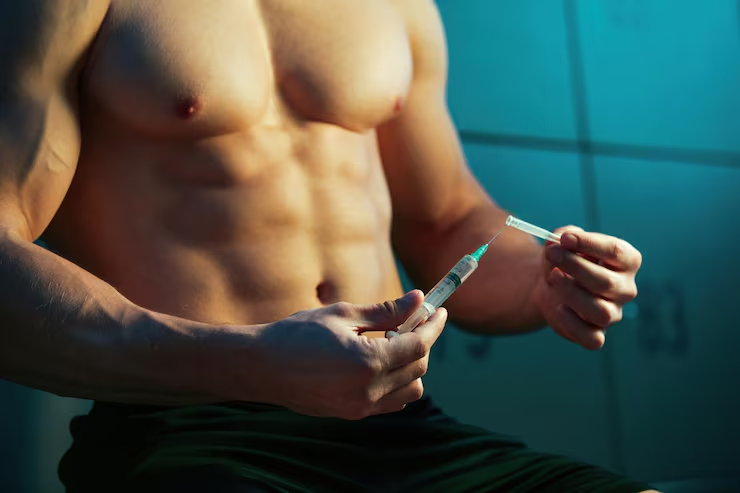The fitness industry is rife with stories of individuals who turned to anabolic steroids to achieve their dream physiques or improve athletic performance. While some find short-term success, the long-term impact often tells a more complex story. Behind the promise of rapid muscle growth lies a reality filled with challenges, health risks, and, for many, a difficult journey toward recovery. By exploring real experiences, we can better understand both the allure of steroids and the importance of recovery in achieving true well-being.
The Allure of Steroid Success
Anabolic steroids promise transformative results—bigger muscles, faster recovery, and improved performance. For many, these benefits can feel like the key to unlocking potential in competitive sports or personal fitness goals. Real-life examples illustrate how steroids have helped individuals achieve dramatic short-term successes.
Case 1: The Competitive Bodybuilder
James, a competitive bodybuilder in his mid-30s, began using steroids to gain a competitive edge. Despite training for years, he felt his progress plateaued and turned to steroids for faster muscle growth and definition. Within months, James saw dramatic improvements, winning regional competitions and securing sponsorships.
For James, steroids initially seemed like a game-changer. His confidence soared, and he became a respected figure in the fitness community. Yet beneath the surface, the long-term effects of his steroid use were beginning to emerge, including significant hormonal imbalances and joint pain.
The Hidden Costs of Steroid Use
The initial success that steroids offer often comes at a steep price. Long-term use can lead to a host of physical and psychological side effects, from cardiovascular problems to dependency. For many users, the turning point comes when the risks outweigh the rewards.
Case 2: The Everyday Gym-Goer
Samantha, a fitness enthusiast in her late 20s, started using steroids after seeing minimal results despite rigorous training. She achieved her desired physique quickly, gaining both muscle mass and definition. However, the rapid changes came with unintended consequences—severe mood swings, hair loss, and irregular menstrual cycles.
Samantha eventually found herself dependent on steroids, believing she could no longer maintain her physique without them. The physical toll, combined with the emotional strain, led her to reevaluate her choices and begin her journey toward recovery.
The Journey to Recovery
Recovery from steroid use is often a challenging and deeply personal process. It involves addressing not only the physical damage but also the psychological and emotional impacts. For many, recovery starts with acknowledging the problem and seeking help.
1. Recognizing the Need for Change
For most users, the road to recovery begins with recognizing the adverse effects of steroids on their health and well-being. Common triggers for change include:
- Health scares, such as cardiovascular issues or organ damage.
- Persistent side effects, like hormonal imbalances or fertility problems.
- Emotional burnout or mental health struggles.
2. Seeking Professional Guidance
Recovery often requires medical and psychological support. Endocrinologists, therapists, and fitness professionals can help former steroid users regain their health. Treatments may include:
- Post-Cycle Therapy (PCT): Medications like selective estrogen receptor modulators (SERMs) and human chorionic gonadotropin (hCG) can help restore natural hormone production.
- Testosterone Replacement Therapy (TRT): For those with prolonged hormonal suppression, TRT can stabilize testosterone levels.
- Mental Health Counseling: Addressing body image issues and emotional dependency on steroids is crucial for long-term recovery.
Case 3: The Athlete’s Comeback
Mark, a college athlete, turned to steroids to excel in his sport, quickly becoming a top performer. However, after experiencing severe depression and liver damage, he decided to quit. The recovery process was long, involving PCT, counseling, and lifestyle changes. Over time, Mark found a new passion in coaching, using his experience to educate others about the risks of steroids.
Lessons from Real Stories
These real-life experiences reveal valuable lessons about steroid use and recovery. While steroids can offer temporary success, the long-term consequences often outweigh the benefits. Recovery, though challenging, is possible with the right support and determination.
1. Success Without Steroids Is Possible
Many former users find fulfillment in achieving fitness goals naturally, emphasizing sustainable progress over quick fixes. With proper training, nutrition, and recovery, impressive results are achievable without steroids.
2. Support Networks Are Vital
Recovery is not a solitary journey. Family, friends, and professionals provide the encouragement and accountability needed to stay on track.
3. Education is Key
Understanding the risks and realities of steroids can deter potential users and empower those in recovery. Real stories serve as powerful reminders of the potential consequences of steroid use.
The Role of the Fitness Community
The fitness industry plays a critical role in shaping attitudes toward steroids. By promoting realistic expectations and prioritizing health, the community can help reduce the prevalence of steroid abuse.
1. Encouraging Transparency
Many fitness influencers and athletes avoid discussing their use of performance-enhancing drugs, creating unrealistic standards. Greater transparency about the risks and challenges of steroid use can foster a healthier, more informed community.
2. Promoting Natural Alternatives
The industry should emphasize the effectiveness of natural training methods and supplements, such as creatine, protein powders, and branched-chain amino acids (BCAAs). Highlighting the benefits of consistency and patience can help shift the focus away from quick fixes.
3. Offering Resources for Recovery
Gyms and fitness organizations can support members in recovery by providing access to counseling, educational materials, and support groups.
Conclusion
The stories of individuals who have used steroids reveal both the allure and the dangers of these substances. While the initial success can be enticing, the long-term consequences often lead to health challenges, dependency, and the need for recovery. These real-life experiences underscore the importance of informed decision-making and the value of prioritizing health over appearance or performance.
For those who have used steroids, recovery is not only possible but also a chance to rebuild both physical and emotional well-being. With the right support and mindset, former users can achieve their fitness goals naturally and sustainably. By sharing these stories, the fitness community can create a culture that values health and transparency, helping others avoid the pitfalls of steroid use.
-
https://www.verywellmind.com/steroids-abuse-faq-69354?utm_source=chatgpt.com
-
https://en.wikipedia.org/wiki/Anabolic_steroid?utm_source=chatgpt.com
-
https://www.addictioncenter.com/stimulants/steroids/steroid-withdrawal-detox/?utm_source=chatgpt.com
-
https://pubmed.ncbi.nlm.nih.gov/37951896/?utm_source=chatgpt.com







